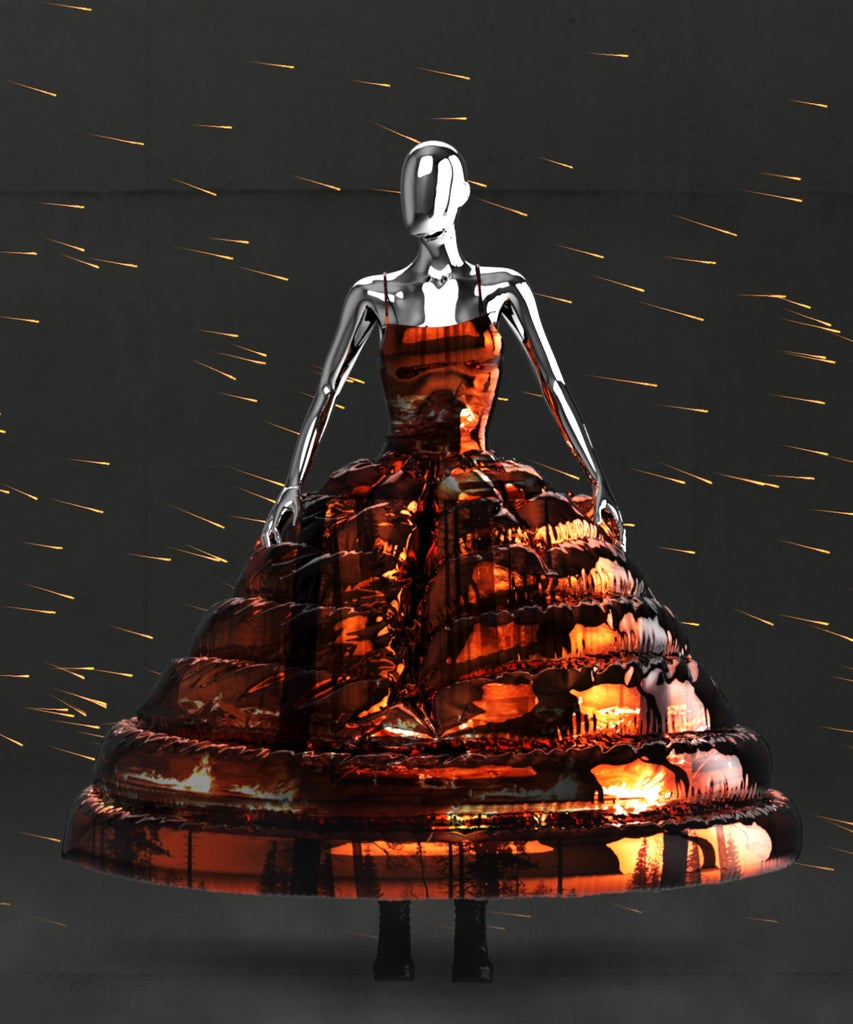Designers Are Holding Fashion Shows In The Metaverse. Will It Take Off?
February 25, 2022BruceDayneFor the past decade, the fashion industry has spewed a lot of talk about democratization. With the age of social media and the arrival of bloggers-turned-influencers, there was no other way for the industry to stay relevant than to open up its doors. But the geographical, cultural, and economic barriers were still there. Now, fashion is embracing a whole new world that could shake up the status quo once again — the metaverse.
“There is a huge community of people and platforms that really care about fashion [in the metaverse],” says Mishi McDuff, the founder of Blueberry, a digital wearables company that has sold over 20 million units of virtual clothing. “I just don’t see why [designers] wouldn’t want to offer these collections to everyone from anywhere in the world.”
The conversations around the metaverse and fashion are multi-layered. On one end, there is the sustainability factor: brands can reduce their waste by producing clothing digitally. (While that’s good on the surface level, it’s worth noting that digital clothing created in the form of non-fungible tokens, or NFTs, can actually have a substantial carbon footprint: a single NFT carbon footprint can equal to two months of electricity usage for a single resident, for example.) Then, there’s the matter of building a bigger fanbase, one that’s pushed brands like Balenciaga and Gucci to capitalize on digitally-native communities to promote and sell their collections. As mentioned above, there is also an effort to democratize the industry even further, beyond the fashion capitals and invite-only fashion week events.
“Maybe someone isn’t able to attend New York Fashion Week, but they are able to come see the show in Second Life,” says McDuff, referring to the digital hub for virtual experiences and communities, where some fashion shows are currently being held.
For an industry that’s been slow to embrace progress — including technology; some brands are still doing show check-ins with pen and paper — it’s a big undertaking. Yet it hasn’t stopped some from trying, particularly during the showcase of fall ’22 collections happening right. To see whether the future is virtual shows, I tried to attend one during this New York Fashion Week. Spoiler: I failed.

The first show that announced a virtual experience was Jonathan Simkhai, which promised a digitalized version of its IRL collection through an invite-only virtual event. When the day came — having ignored the fine print from the invite, which instructed me to download an app on my laptop and log in 15 minutes before the show — I attempted to access The Second Life from my iPhone while in-between fashion week events. Of course, I wasn’t able to, only being able to enjoy the clothes from the photos released afterward. It seemed strange to me why a designer would stage a show that could only be accessed via computer in the middle of fashion week, when editors are running frantically around town unable to carry a laptop with them.
It turns out, virtual shows may not be for us, but rather for people who are already part of the virtual community. According to McDuff, these are avatar editors and influencers, many of whom are outside of the traditional fashion industry: “They do make-believe in Second Life all the time.”
This kind of dichotomy between reality and virtual fiction is what inspired designer Jonathan Simkhai to go to the metaverse in the first place. “I’m fascinated by the idea that one could be anyone they choose to be in this space, ultimately celebrating different backgrounds, body types, and beauty,” Simkhai wrote via email. “I don’t believe digital will surpass the physical experience, but the optionality introduces a new era for our industry.” (In addition to the Second Life-based show, Simkhai displayed his fall 2022 collection via in-person appointments in New York City during fashion week.)
From Simkhai’s perspective, the metaverse fashion scene and IRL shows should coexist seamlessly. “To me, it’s more about accessibility and community building,” he says. “Activating in the metaverse allows us to reach a customer who maybe isn’t familiar with the brand, but allows them to create a digital identity using the clothes.” So much so that when editors were invited to attend Simkhai’s virtual show, they were asked to send in photos with which the Blueberry and Second Life team would create avatars that would sit in at the virtual show wearing the brand’s clothes. “This was the opportunity to look forward and into the future, analyzing how that could dictate current experiences,” he says.
Other brands like Imitation of Christ and Maisie Wilen also capitalized on the metaverse and digital wearables this season. “This is the age of disruption and to end this endless dystopia — we have all been displaced and our communities have gotten smaller or been destroyed due to a global pandemic — we are rebuilding and reassessing,” said Imitation of Christ’s founder Tara Subkoff, who partnered with artist Adam Teninbaum to transform physical garments into digital wearables for the show, in a press release. “To be able to create a new community that can travel anywhere and is always there for people is a dream come true for me.”


The collection reflected Subkoff’s dystopian mentality: Avatars walked through fire-lit forests wearing metallic hoodies, leggings, cut-out tops, and ballgowns that looked like they were made with the last remaining foil on Earth after the great collapse. The message is not a departure from the brand’s longstanding commentary on consumerism and climate change: Last September, Subkoff presented a collection that included scribbles that read “the more you consume, the less you live” over jackets, dresses, and pants.
This movement is happening outside of New York, too: On Thursday, Plein Sport unveiled a digital collection in partnership with the digital platform and marketplace Decentraland during Milan Fashion Week.
These activations mark the beginning for fashion’s Web 3.0 migration. Following the success of Balenciaga and Gucci in showing their collections and selling digital wearables in the metaverse, Decentraland is hosting its first Metaverse Fashion Week from March 24 to 27. For McDuff, events like these are an opportunity to disrupt the fashion system — from its production cycle to accessibility — and also provide the virtual humans with well-designed clothes: “Fashion needs to be on digital platforms… the same reason we need it in real life is the same reason we need it in digital worlds.”
While I may have not been able to attend a metaverse fashion show just yet, I’m crossing my fingers for a front-row seat soon. Now I just have to figure out: What will my avatar wear?
Like what you see? How about some more R29 goodness, right here?
Why Gamers Are The Cool Kids In Fashion Right Now
OPI x Xbox Is The Nail Polish Collab For The Gamer
Are Digital Clothes More Sustainable?
DMTBeautySpot
via https://dmtbeautyspot.com
Frances Solá-Santiago, DMT.NEWS, DMT BeautySpot,


0 comments